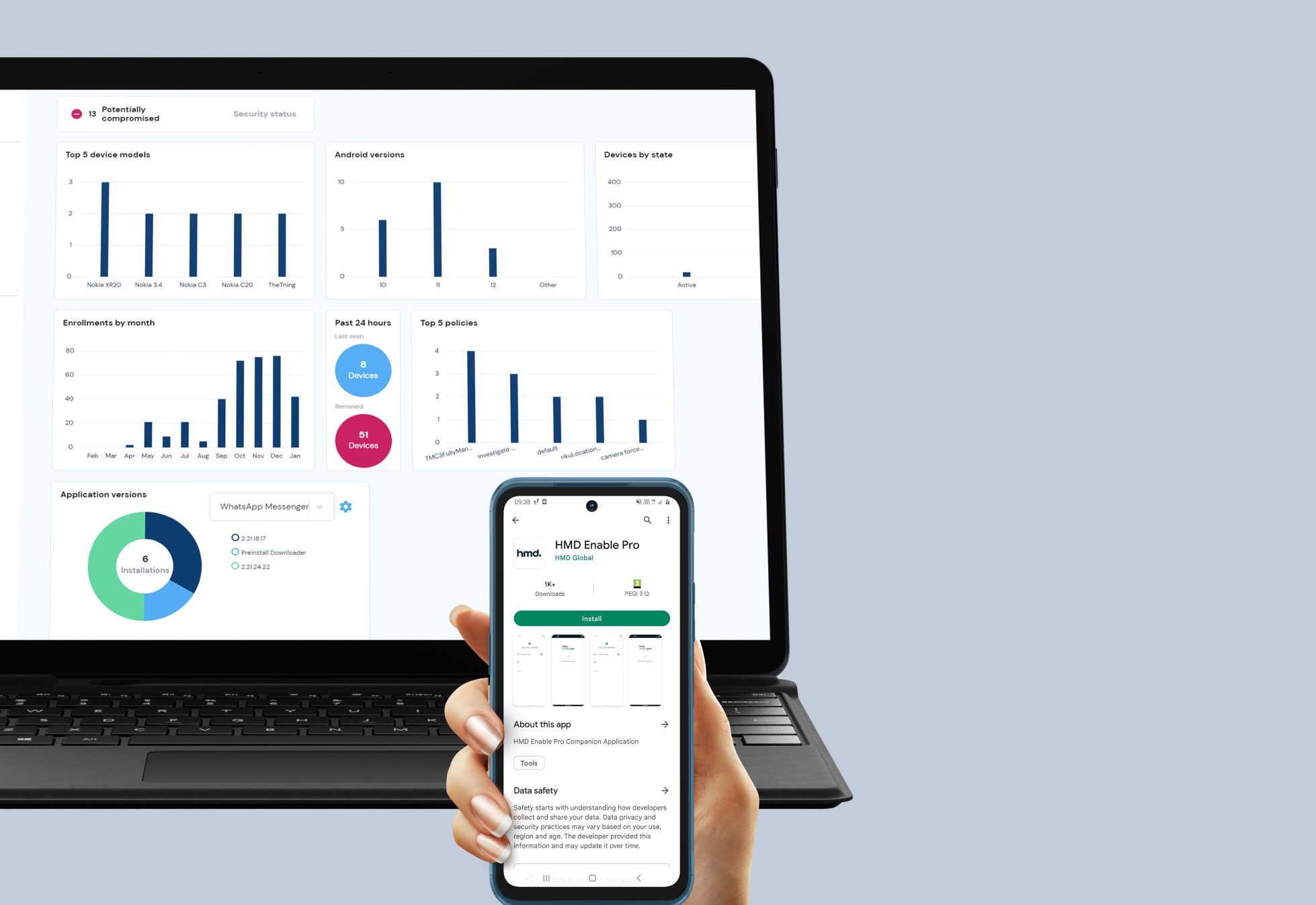HMD Global, the Finnish phone maker and inheritor of the Nokia mobile phone brand, has revealed plans to transition some of its manufacturing to Europe.
The company said the move is designed to meet a “surge in customer demand” for locally produced devices, due in part to security and sustainability concerns among both its corporate and consumer users.
The announcement, which was timed to coincide with the Mobile World Congress (MWC) 2023 industry event in Barcelona, comes four years after HMD Global revealed it was moving its data centers to Europe to satisfy European Union (EU) data regulations such as GDPR. Moving manufacturing there, it seems, is a natural next step.
“We already have our data centers in Europe — more specifically we have our data centers in Finland, to ensure the security of our devices,” HMD Global chief marketing officer Lars Silberbauer said in a press briefing earlier this week. “By starting this journey to bring manufacturing to Europe, we want to ensure that the critical part of the development of the devices are within Europe and within European legislations, which is quite important for a lot of our customers.”
So in many ways, the company is adopting a similar philosophy for manufacturing as the cloud computing industry has been doing for data with region-specific infrastructure — sovereignty is very much the name of the game, bringing the “product” closer to the customer, making it easier for all concerned to adhere to local laws and regulations.
Maker’s mark

Nokia 5.4 smartphone, released by HMD Global in December 2020. Image Credits: HMD Global
HMD Global emerged from the ashes of Microsoft’s ill-fated Nokia devices acquisition in 2013, a move that ultimately led to a $7 billion “good will” writedown after Satya Nadella entered the CEO hotseat and refocused the company’s efforts. Microsoft eventually offloaded the Nokia business entirely, with Nokia inking a brand-licensing deal with the newly established HMD Global entity in 2016.
For the most part, HMD Global has focused on feature phones and budget smartphones, but that hasn’t stopped the Helsinki-based company from raising $330 million in venture capital (VC) funding, the lion’s share arriving in 2020 from big-name backers including Google, Qualcomm, and Nokia itself.
As with most mobile phone companies, HMD Global has hitherto relied on Asia for its manufacturing output, specifically China and India. And it’s clear that isn’t changing. But as part of its burgeoning ambitions in the enterprise realm specifically, which includes a suite of add-on subscription services for businesses, the company wants to further differentiate itself in a space that includes deep-pocketed incumbents such as Samsung, Google, and — of course — Apple.
Indeed, today’s news doesn’t signal the start of a major “lift and shift” effort to bring existing Nokia phone manufacturing to Europe. Silberbauer stressed that the company sees this as a means to attract new customers with very specific localization demands in the region.
“We will not be taking production away from anywhere,” he said. “We see it as a growth opportunity for the European market.”
Silberbauer told TechCrunch that its European manufacturing endeavors will begin with a 5G smartphone aimed at “security conscious industries,” and will be offered purely as a B2B product. It expects manufacturing and shipping to begin as soon as the third-quarter of 2023, with plans to add at least one consumer-focused device to the mix in the future.
“It’s step-by-step that we are taking this journey towards manufacturing in Europe,” Silberbauer said.

HMD Enable Pro: An Enterprise Mobility Management (EMM) service for centrally managing Nokia devices. Image Credits: HMD Global
Address unknown
The big elephant in the room here, of course, is where — exactly — is HMD Global manufacturing its devices in Europe? Finland, perhaps, might be a good bet given that is where the company is headquartered. But despite repeated attempts to garner specifics around its manufacturing plans on the continent, Silberbauer cited security concerns as one reason why they couldn’t divulge the precise location of its factories.
“Unfortunately, due to our customers being in various security-conscious industries, we’re not allowed to tell anyone which countries we are producing these devices in, simply to keep it as secure as possible,” he said.
However, Silberbauer did spill some beans around what the manufacturing flow might look like at first, confirming that HMD Global will still be working closely with its existing partners in Asia.
“We cannot just flick a switch and then have a fully functioning factory in Europe,” he said. “It needs to be taken step-by-step. So the first steps are basically that our current partner in China will collect the materials and conduct initial security, before they ship to our manufacturing partners in the EU. And from there, the partner in Europe will finish the assembly, calibrate and test the devices, test hardware, and specifically test the software for security.”
HMD Global is also using this new distributed manufacturing model to tout its sustainability credentials, with Silberbauer noting that this is one reason why it doesn’t make sense to move its existing manufacturing from its current location in Asia, where it already has a strong customer base.
“Manufacturing in Europe means that we will decrease the carbon footprints on those devices,” Silberbauer said. “It would not make sense to manufacture all of our phones in Europe, because all of our markets and consumers are not in Europe. It’s best from a sustainability point of view to keep the production in those areas where the consumers are.”

